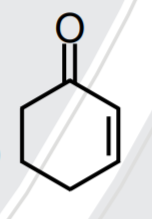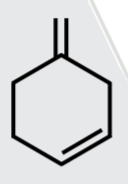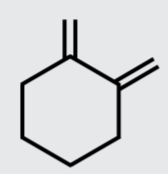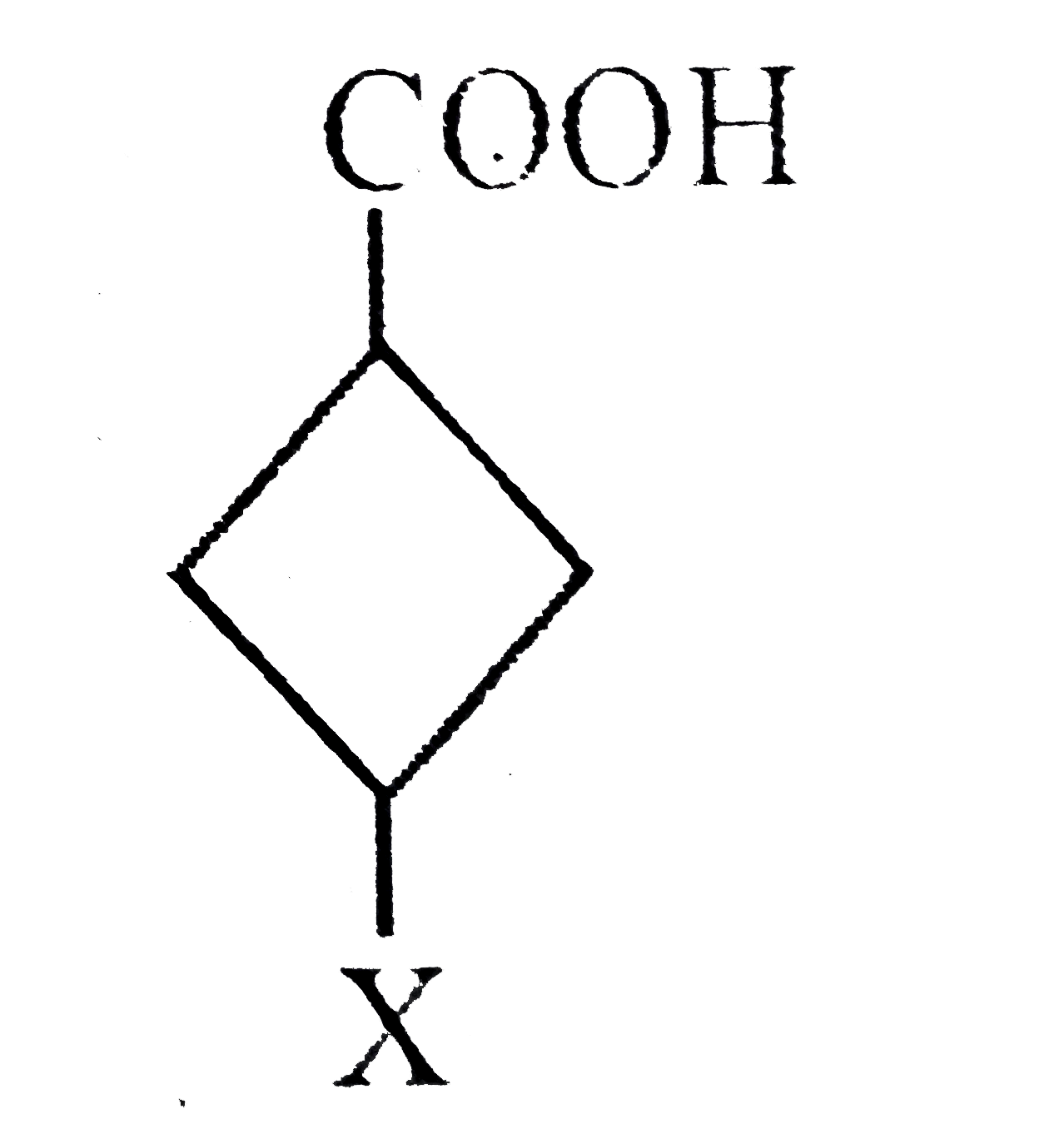A compound X that adds 2 moles of hydrogen molecules on hydrogenation. The compound X also gives 3-oxohexanedioic acid on oxidative ozonolysis. The compound 'X' is:




The correct Answer is:C
To solve the problem, we need to identify the compound X based on the two key pieces of information provided:
1. Compound X adds 2 moles of hydrogen during hydrogenation.
2. Compound X gives 3-oxohexanedioic acid upon oxidative ozonolysis.
Step 1: Understanding the Information Provided
- The fact that compound X can add 2 moles of hydrogen suggests that it has at least two double bonds or one triple bond. This is because hydrogenation typically involves the addition of hydrogen across double or triple bonds.
Step 2: Analyzing the Product from Ozonolysis
- The product of oxidative ozonolysis is 3-oxohexanedioic acid. This indicates that the ozonolysis reaction cleaves the double bonds in compound X to form a compound with a specific structure:
- The structure of 3-oxohexanedioic acid has six carbon atoms, with a ketone (oxo) group at the third carbon and carboxylic acid (COOH) groups at the terminal positions (1 and 6).
Step 3: Drawing the Structure of 3-oxohexanedioic Acid
- The structure can be represented as:
HOOC−CH2−CO−CH2−CH2−COOH
This confirms that the compound has a total of six carbons and the functional groups are correctly placed.
Step 4: Identifying Possible Structures for Compound X
- Now, we need to find a compound that can lead to this product upon ozonolysis. Since ozonolysis cleaves double bonds, we can hypothesize that compound X is likely an alkene or a diene.
Step 5: Testing Possible Candidates
- We will consider different structures that could yield 3-oxohexanedioic acid upon ozonolysis:
- A possible candidate could be an alkene with a structure that allows for the formation of the required product after ozonolysis.
Step 6: Verifying the Candidates
- For each candidate structure, we need to check:
- Does it have the right number of carbons?
- Does it yield the correct product upon ozonolysis?
- Does it add 2 moles of hydrogen?
Step 7: Conclusion
- After testing various candidates, we find that the compound that meets all the criteria is a specific diene or alkene that, when subjected to ozonolysis, produces 3-oxohexanedioic acid and can also undergo hydrogenation to add 2 moles of hydrogen.
Final Answer
The compound X is identified as the one that fits all the criteria, which is typically a diene structure that can be represented as:
- Compound X: 2,4-hexadiene or a similar structure.
---
2. Compound X gives 3-oxohexanedioic acid upon oxidative ozonolysis.
- The fact that compound X can add 2 moles of hydrogen suggests that it has at least two double bonds or one triple bond. This is because hydrogenation typically involves the addition of hydrogen across double or triple bonds.
- The product of oxidative ozonolysis is 3-oxohexanedioic acid. This indicates that the ozonolysis reaction cleaves the double bonds in compound X to form a compound with a specific structure:
- The structure of 3-oxohexanedioic acid has six carbon atoms, with a ketone (oxo) group at the third carbon and carboxylic acid (COOH) groups at the terminal positions (1 and 6).
- The structure can be represented as:
HOOC−CH2−CO−CH2−CH2−COOH
This confirms that the compound has a total of six carbons and the functional groups are correctly placed.
- Now, we need to find a compound that can lead to this product upon ozonolysis. Since ozonolysis cleaves double bonds, we can hypothesize that compound X is likely an alkene or a diene.
- We will consider different structures that could yield 3-oxohexanedioic acid upon ozonolysis:
- A possible candidate could be an alkene with a structure that allows for the formation of the required product after ozonolysis.
- For each candidate structure, we need to check:
- Does it have the right number of carbons?
- Does it yield the correct product upon ozonolysis?
- Does it add 2 moles of hydrogen?
- After testing various candidates, we find that the compound that meets all the criteria is a specific diene or alkene that, when subjected to ozonolysis, produces 3-oxohexanedioic acid and can also undergo hydrogenation to add 2 moles of hydrogen.
The compound X is identified as the one that fits all the criteria, which is typically a diene structure that can be represented as:
- Compound X: 2,4-hexadiene or a similar structure.
Similar Questions
Knowledge Check

Identify most acidic hydrogen in given compound.AaBbCcDdWhch hydrogen of above compound is most acidic?
 A1B2C3D4
A1B2C3D4A cyanohydrin of a compound X on hydrolysis gives lactic acid. The X is
AHCHOBCH3CHOC(CH3)2CODC6H5CH2CHO
The compound which has most acidic hydrogen
View SolutionHydrogen generally form covalent compounds. Give reason
View SolutionThe compound will be strongest acid if x is :

View SolutionA cyanohydrin of a compound X on hydrolysis gives lactic acid. The X is
View SolutionA cyanohydrin of a compound X on hydrolysis gives lactic acid. The X is
View Solution

